The transition to renewable energy is well underway, and insurers are working to help the sector overcome its growing pains.

The heat is on to transition our energy supplies from fossil fuels to renewables, which is leading to the construction of a vast amount of new energy infrastructure. Thanks to the added push of new investment, this expansion of infrastructure is in full swing.
But as with all developing technology, there are some kinks to work out. Add to this the uncertainty of climate change, and the green energy build-out may face a bumpy road ahead. These perils aren’t limited to property damage alone; as green infrastructure expands, new liability exposures are emerging as well.
Independent power producers (IPPs) and utilities will need their insurers to remain nimble and innovative enough to help them make it past the energy transition tipping point.
Emerging Tech Is Evolving Tech
Some forms of green infrastructure, like hydrogen generators, are relatively new. Others — like photovoltaic panels, wind turbines and battery energy storage systems (BESS) — have been around for decades, but even so, they haven’t been used at the scale needed to produce a robust actuarial history.
And the tech itself is constantly changing: more resilient panels, for example, and higher-capacity windmills.
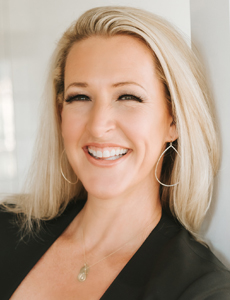
Tracey Estes, head of casualty, MSIG USA
“From a technology perspective, the market is still very much in the early stages of development,” said Tracey Estes, head of casualty, MSIG USA. “I’m confident that’s going to continue to evolve. But with that comes the challenges of exposures that we don’t understand.” She added that more advanced tech will be “safer, and that’s great. But until that time comes, companies will need to underwrite around the exposure.”
These exposures are diverse: the hail that damages solar panels, the lightning that sets wind turbines on fire, the thermal runaway that sets BESS ablaze, and even everyday wear and tear.
“The pace of change of the technology has made it a bit difficult to keep up with from a mechanical breakdown and traditional fire insurance perspective,” said Scott Smidlein, head of energy practice, HSB. “By the time we as insurers — and from a risk engineering standpoint — are getting comfortable with some of these technologies, they’re going through another evolution.”
Even more difficult to foresee than their property exposures are these projects’ potential liability exposures, which could comprise everything from noise complaints to grid failures, wildfires, erosion and chemical leaks.
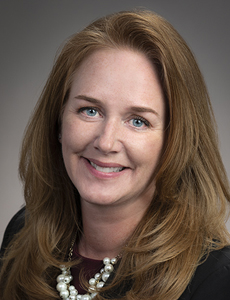
Marcy Pelecky, VP casualty programs underwriting, E&S/specialty, Nationwide
“Similar to fossil fuels, we are going to see litigation abuse,” said Marcy Pelecky, VP casualty programs underwriting, E&S/specialty, Nationwide. “Clever plaintiffs’ attorneys are going to find ways to pursue claims in ways that I don’t think we as insurers have necessarily considered. There’s a lot of social activism around some of these particular risks based off potential pollution exposures, and this in turn brings with it another level of scrutiny.”
All of these exposures represent technical problems to be solved, and with enough time and investment, engineers will solve them. Solar panels can be protected with retractable nets or built to withstand larger hailstones or stow themselves during inclement weather; BESS can be installed with safety features to avoid fire spread; wind turbines can power down as a storm approaches; and new models can help predict these weather events with greater precision and accuracy.
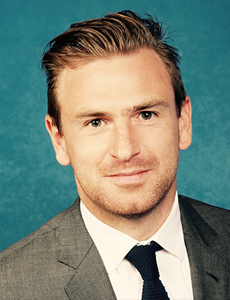
Edward Stewart, SVP, Alliant
“Increasingly, we’re going to see AI be brought in to help make decisions a lot faster,” said Edward Stewart, SVP, Alliant. “Are we stowing for hail or are we stowing for wind? We will see ever more granular or more forensic-level analysis of what weather is approaching and its likelihood, and maybe even take the decision-making away from humans and let AI conduct probability analysis about what we stand to lose if we stow or not.”
Improved modeling will help to avoid losses on the liability side as well: “The ability to get the data, give it a grade and determine the possibility of loss is critical,” said Estes. “But those models need to evolve as the data becomes more available.”
Meanwhile, the renewables sector is looking to the insurance industry to help manage its risk.
Reducing Client Exposures
As with anything, the best step an organization can take to limit its exposure — and the cost of transferring its risk — is to address the things it can control.
Where the technology or the budget to engineer risk away is lacking, insureds can reconsider how they structure their risk. Even when premiums are affordable, higher attachment points, sublimits and exclusions can make self-insured retentions unpalatable — and here, alternative risk transfer may hold some appeal.
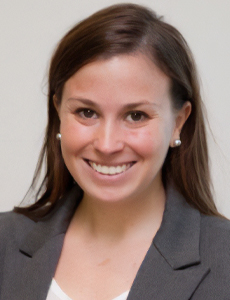
Molly Lovelette, VP, energy & marine, Alliant
“We’ve been successful in implementing things like parametric insurance to address natural catastrophe risks,” said Molly Lovelette, VP, energy & marine, Alliant. “We’ve also looked at alternative risk transfer solutions to help address the gap in coverage availability from the traditional property marketplace versus the potential economic impact of a loss to a project … because you’re capped at your sublimit under your insurance program. Captive structures can also help insureds manage the cost by retaining the risk in house, thereby driving down the premiums and the rates that they’re getting from traditional property markets.”
She added that “outside of insurance, there are indemnity agreements that we’ve used, specifically on deductible buydowns and the sorts of structures that can help take risk away from insurers and transfer it back to the clients, especially when they’re talking about lender compliance.”
Of course, there is no substitute for proper risk engineering. Even where budgets are tight and tech is still evolving, there are ways to ease potential losses — through better training, for instance, or more diligent management of service agreements.
“Anytime you see considerable financial resources going to a certain type of business, there is an influx of new entrants to the marketplace,” said Pelecky. “These businesses then grow rapidly. We saw this on the fossil fuel side … a lot of investment went into that segment, businesses wanted to scale up, and then there was a shortage of workers due to the pandemic, followed by a lack of proper training on the job sites. The businesses then grew too quickly, and then we started to see risk deteriorate significantly.”
She added, “When something bad happens and there’s multiple insureds at a risk site, are all the contracts in line? Has everybody understood what their job was, and who was potentially at fault? We see this often in the fossil fuel risks where insures are getting pulled into claims due to a lack of proper risk transfer.”
Estes stressed that when it comes to liability, it’s not enough to mitigate risk; you have to document those efforts as well. “If you’re a solar company and you have [wildfire] exposure, you should have vegetation management programs in place — and you need to document that, and your broker should be working with you to make sure that is clearly defined,” she explained. “The better the documentation, the better we can make underwriting decisions. And any insured should always want to be proactive and position themselves as best-in-class, because they’re fighting for this capacity.”
The Question of Appetite
As a burgeoning sector, renewable energy is attracting underwriters, but pricing and exclusions are rising in response to the volatile claims environment, making it easier to find insurers willing to sign on but more difficult to assemble a complete program.
“There’s still a ton of capacity in the marketplace, especially as we see insurance companies begin to mandate ESG standards — renewables has been a pretty easy way for them to do that,” Lovelette explained. “We do have our traditional renewable markets, who have been there for quite a while, but what we are seeing as well are thermal markets looking to divest away from the traditional thermal powers and create a more diverse portfolio.”
But the sublimits that must be stipulated to address extreme weather phenomena are triggering “conversations going back to the executive level to talk about the actual cost of insurability [or] even the viability of projects,” said Stewart. “Often, we’re able to get more than 100% capacity from the markets, because they’re interested in the projects. It’s more about us having to refine that and make sure that we get the most efficient insurance with the broadest coverages for our clients.”
Estes agrees: “For brokers, it’s tougher now to fill a full tower than it has been in the past.”
Overcoming that hurdle may come down to better underwriting. Insurers that have greater familiarity with the sector, with more data and specialized talent, will be better at pricing risk — and more confident in offering comprehensive coverage.

George Beattie, head of innovation, CFC
“It’s hard to accommodate risk for things like BESS, things like hydrogen, because the data is scarce and hard to get your hands on,” said George Beattie, CFC’s head of innovation. “But in innovation, you need to take a leap of faith between what you know and what you’d like to know — you can never have perfect information, and actually, the industry has struggled to innovate because we’ve been looking for perfect, and it doesn’t exist in really new areas.”
As Pelecky explains, volatility in the pricing of liability covers is a quirk of their history: When it comes to pricing risk accurately, “the lack of historical pricing is one of the biggest concerns in making this transition from more traditional fossil fuels into the renewable space. Many of these renewables have heavy property exposure … and we’ve seen that the GL coverage was discounted in order to accommodate the very significant property rates that were needed for a solar farm, for instance.”
But as the marketplace grows, Pelecky said, “there’s a struggle from potential insureds to understand that we need [higher premiums] for the GL line to be profitable and sustainable, because for so long, it’s been considered part of the larger package and has been underpriced.”
Green Liabilities
With better data and more expertise, underwriters will not only be able to price their offerings more accurately — they’ll also be able to offer products better tailored to the industry’s needs. While there’s significant overlap between the traditional energy sector and renewables, the latter does face unique risks. This may be particularly true in the environmental liability space.
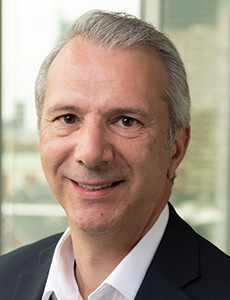
Michael Padula, head of U.S. environmental, Aspen Insurance Group
“It’s incumbent on insurers and our brokers to get a better understanding of the changes happening within the renewable energy space,” said Michael Padula, head of U.S. environmental, Aspen Insurance Group, “and to make sure that we understand the risks and where the gaps in coverage may exist, because existing products are not sufficient for these new exposures. In these instances, we need to work with our trading partners and clients to develop new and proper risk transfer products.”
Environmental is still a somewhat discretionary purchase in renewables, Padula said, obligating insurers and brokers “to educate the industry on why environmental is really needed to protect their balance sheet.” And while renewables may be a young industry, “the environmental space is now a mature space within the insurance sector — there’s a lot of expertise in the area to foresee environmental issues.”
In fact, there are a whole range of environmental exposures here: “Just because we attach ‘green’ to something doesn’t mean it’s without environmental exposure,” Padula noted.
The mining of minerals, manufacture using chemicals and the recycling of materials, for instance, all come with environmental exposures that insurers are well-equipped to address.
Solar installations are often built on brownfields and former landfills — a great way to repurpose these properties, but one bearing the risk of legacy soil and water contaminants that their new owners may be liable for.
These projects also need to run cables that connect them to the grid; digging trenches or running power lines aboveground can introduce the risk of damaging a buried pipeline or igniting a wildfire.
The ongoing operation and maintenance of these sites also introduces unique risks: “Another big concern is illicit abandonment — people dumping waste on these properties because they’re open spaces and easy to access,” Padula said.
“You also have to worry about erosion and sediment issues, because if an insured experiences a large precipitation event, they could have a lot of sediment going into rivers or creeks and creating natural resource damages.”
Finally, Padula added, there’s the question of what happens to equipment like solar panels at the end of their useful life. “You just can’t toss them aside. They contain metals and hazardous materials, and have to be disposed of properly. The Resource Conservation and Recovery Act through the EPA says you’re responsible for this material from its birth to its death.”
Tailor-Made Covers
Those areas where insurers have so far been inclined to make policy exclusions represent an opportunity for new products to come to market. An important one could be specialized covers for mechanical failure; original equipment manufacturers often offer warranties, but their costs can be punishing.
“If we can get our heads around how and when this technology fails and the protocol for that,” Beattie said, “then we can offer some pretty sensible warranty-type products to wrap around this technology and make their money go further.” The challenge, though, is that “this is very technical information, very hard to get at, and the values at risk are really, really big as well,” he added. “With data, you can do almost anything. Getting that data is almost 99% of the problem.”
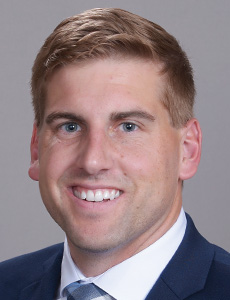
Scott Smidlein, Scott Smidlein, head of energy practice, HSB
Another opportunity lies in trade credit insurance and tax liability insurance; because the green energy build-out is so heavily incentivized by the Inflation Reduction Act’s investment tax credits and production tax credits, “we’ve been very successful in placing tax liability insurance for a lot of our projects,” Lovelette said.
“Ultimately, as insurers, we’re in this industry for a reason, and we’re in this for the long run with the energy transition,” said Smidlein. “We want to make it work. It goes back to making sure that if there’s products that need to exist, folks are letting us know and communicating that so we can work together on what needs to happen.” &




